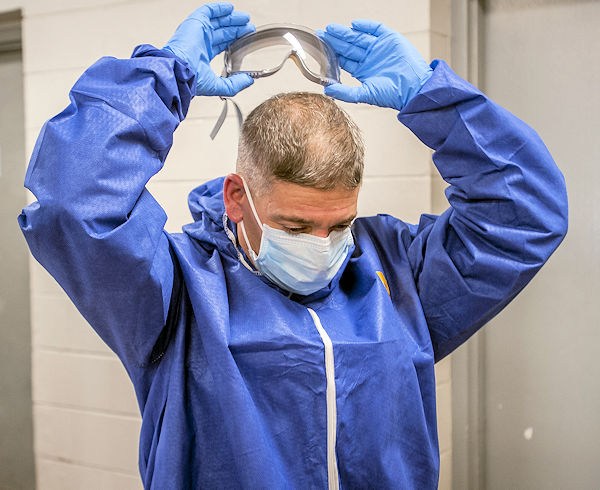Personal Protective Equipment (PPE)
When engineering, work practice, and administrative controls are not feasible or do not provide sufficient protection, employers must provide PPE to their employees and ensure its use. PPE is actually used primarily in conjunction with other controls.
- Eye and Face Protection. Safety glasses or face shields are worn any time work operations can cause foreign objects to get in the eye. For example, during welding, cutting, grinding, nailing (or when working with concrete and/or harmful chemicals or when exposed to flying particles). Wear when exposed to any electrical hazards, including working on energized electrical systems.
- Eye and face protectors - select based on anticipated hazards.
- Foot Protection. Construction workers should wear work shoes or boots with slip-resistant and puncture-resistant soles. Safety-toed footwear is worn to prevent crushed toes when working around heavy equipment or falling objects.
- Hand Protection. Gloves should fit snugly. Workers should wear the right gloves for the job (examples: heavy-duty rubber gloves for concrete work; welding gloves for welding; insulated gloves and sleeves when exposed to electrical hazards).
- Head Protection. Wear hard hats where there is a potential for objects falling from above, bumps to the head from fixed objects, or of accidental head contact with electrical hazards. Hard hats - routinely inspect them for dents, cracks or deterioration; replace after a heavy blow or electrical shock; maintain in good condition.
- Hearing Protection. Use earplugs/earmuffs in high noise work areas where chainsaws or heavy equipment are used; clean or replace earplugs regularly.
Like administrative controls, the use of PPE does not control the hazard itself, but rather it merely controls exposure to the hazard by setting up a barrier between the employee and the hazard. Use of PPE may also be appropriate for controlling hazards, while engineering controls are being installed or work practices developed.
We'll cover PPE in more detail in the next module.
For more information on PPE, take OSHAcademy Course 709 Personal Protective Equipment, and see OSHA's Publication 3151, Personal Protective Equipment.
Knowledge Check Choose the best answer for the question.
3-10. When using PPE it's important to remember that _____.
You forgot to answer the question!

